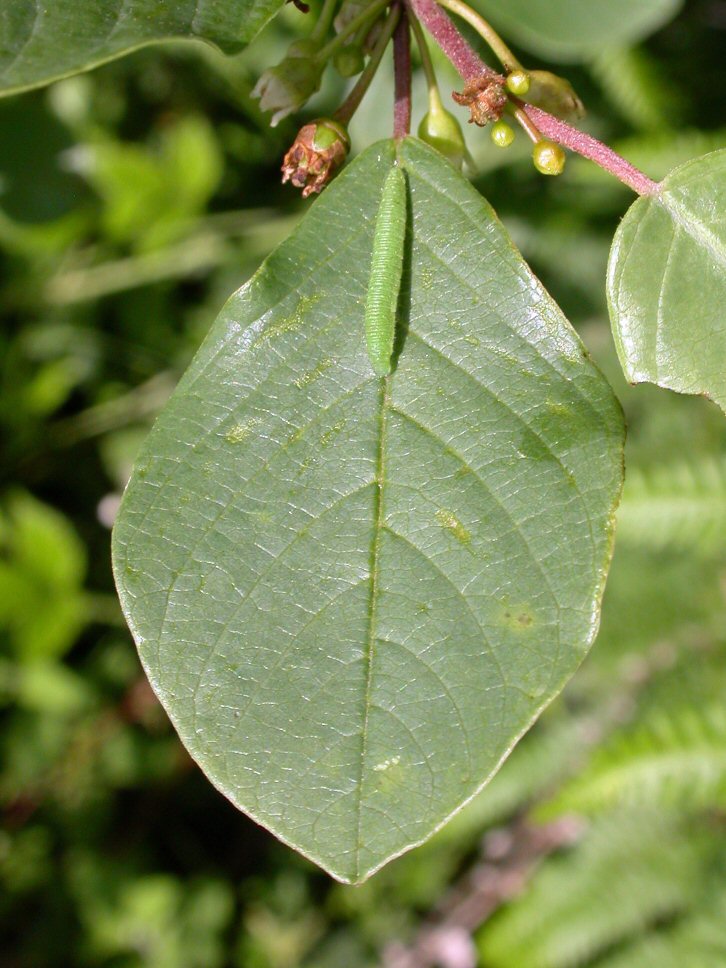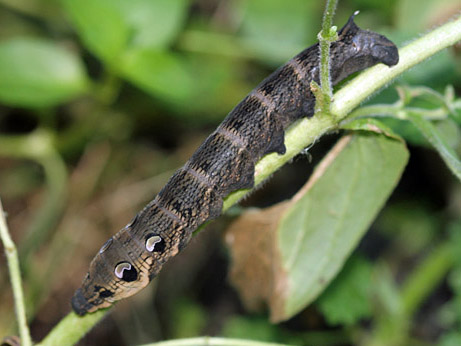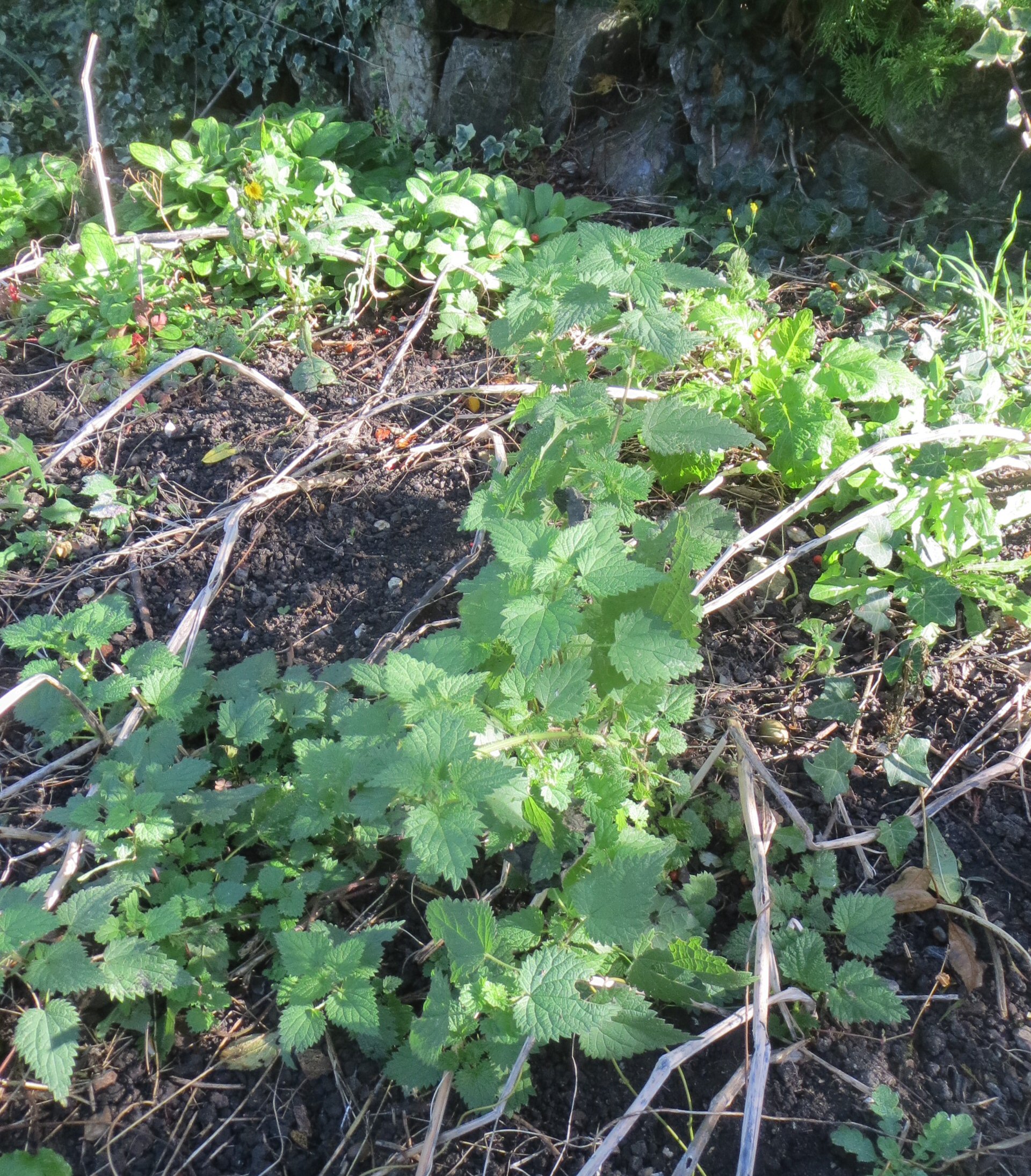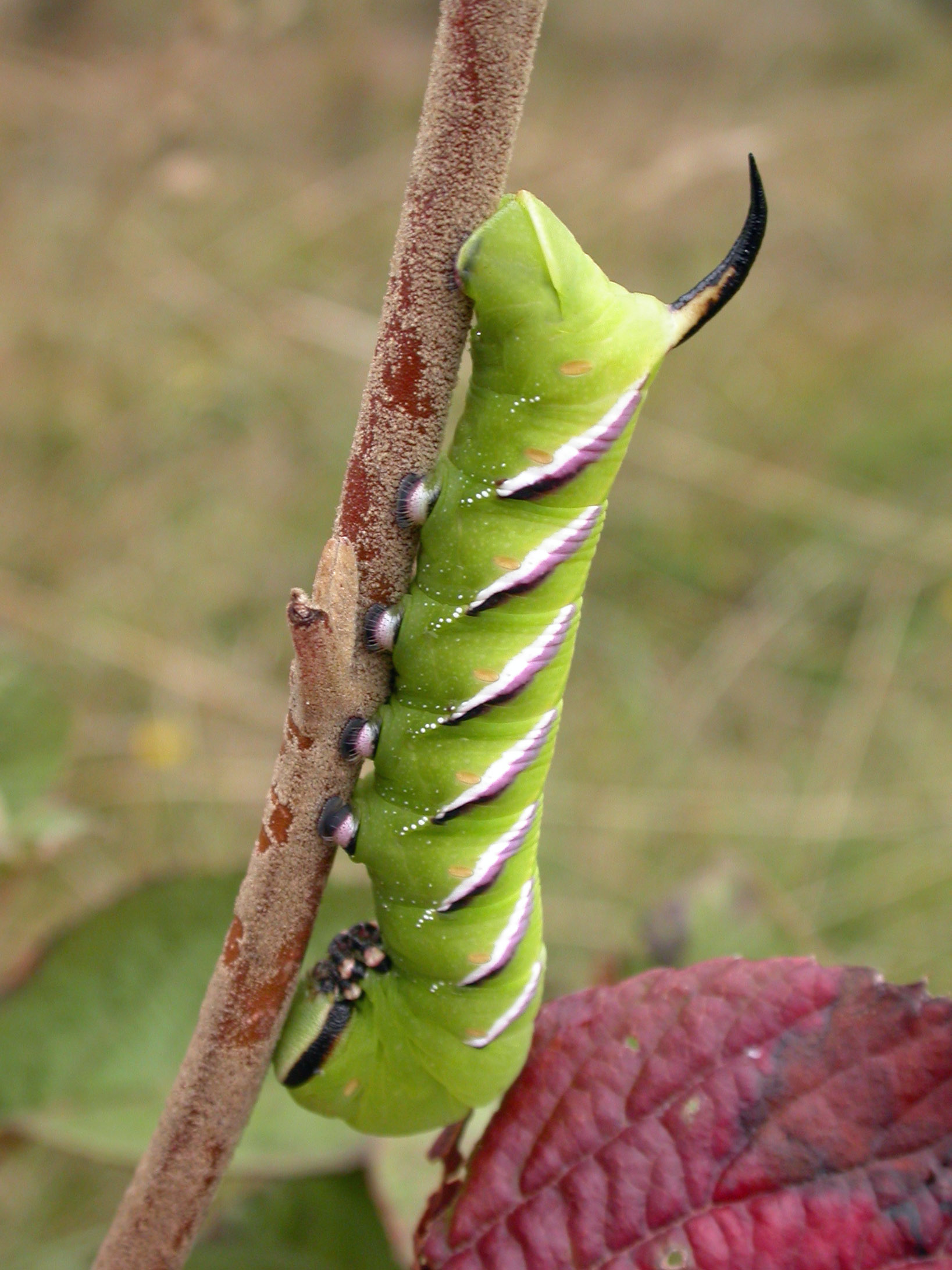- Home
- Practical Advice
- Plants and planting
- Plants for herbivores
Plants for herbivores
By Adrian ThomasReviewed by Steve Head
Much attention is given to which flowers attract pollinators and which berry-bearing shrubs attract birds, but most garden wildlife feeds on something else. The detritivores and decomposers feed on dead or decaying organic matter; the carnivores catch living creatures; and this webpage deals with the oft-overlooked herbivores that eat plant material other than pollen, nectar and fruit.
Key garden herbivores
There is a wide range of garden wildlife that feeds on living plants, primarily leaves but also on sap, roots and woody tissue. Some are what might be considered pest species (such as aphids, snails, ‘cabbage white’ butterflies and slugs), but most don’t inflict enough damage to be a problem or even be noticed.
Common garden herbivores include:
- The larvae of moths (most species) and butterflies (all species)
- Bush-crickets
- Some beetles and beetle larvae, especially weevils, leaf beetles and chafers
- True bugs (eg capsid bugs, shield bugs, flower bugs)
- Some fly larvae (eg sawflies, daddy long-legs, leaf-miners)
- Gall-inducing creatures (eg certain wasps, flies, midges and aphids).
More unusual or infrequently seen garden herbivores include grasshoppers, voles, deer and rabbits, while some species take plant material as part of a wider diet, such as Woodpigeons, woodlice and earwigs.
Why should we garden for herbivores?
While it is very easy for the focus of wildlife gardening to be on pollinators and birds because they are so visible, considering the needs of garden herbivores is vital. For example, for groups such as butterflies and moths, it is the rate of survival of the larval stage that is thought to be critical for maintaining population levels, so providing the right plants in the right places for the right species is vital for their conservation.
Many herbivores are vital links in garden food chains. For example, many garden birds are reliant on a good supply of herbivorous invertebrates, especially caterpillars, to feed to their young. Blue tit chicks need about 100 caterpillars each per day, so for a large brood, a pair may need to find 1,200 caterpillars daily within their territory. Meanwhile, any creatures that feed on adult moths, such as bats, rely on moth larvae successfully reaching maturity.
Left: Privet hawk moth caterpillar
So what should we grow to help herbivores?
Some herbivores are generalists - they will feed on almost anything, it seems, as any gardener who has been visited by rabbits or had their seedlings ravaged by slugs will testify. At least a fifth of our larger moths’s caterpillars are ‘polyphagous’ - they will eat almost anything.
At the other end of the spectrum, some herbivores restrict themselves to one genus or even one species of plant. The butterflies are prime examples, with the caterpillars of almost all species being specialist feeders on one or two native plant species. For example, if you don’t have Purging Buckthorn or Alder Buckthorn in your garden, you will not have caterpillars of the Brimstone butterfly. You can find useful information about the plants British butterflies feed on here, and the Natural History Museums's database of food plants of the world's butterflies and moths is available here.
However, we do know that some specialist herbivores have actually proved themselves to be adaptable, such as the Elephant Hawkmoth, whose larvae typically feed on willowherbs but which have taken to feeding on fuchsias.
Much wildlife gardening debate has focused on the relative merits of native and non-native plants. We still need more research on this issue, but it is clear that many non-native plants are valuable, and some are excellent for more polyphagous garden insects. It may however be that some less common species would use our gardens if we provided the right native plants or their relatives, and if there is a local breeding population that can find the plants.
For a detailed discussion about the relative merits of native and non-native plants, visit our web page here.
However, in general we can assume that the more luxuriant that plant growth is in a garden, whether native or non-native, the more herbivores it is likely to hold. So fill available space with the greatest volume of plants possible, which means including trees, shrubs and climbers where possible.
For the specialist herbivores, you can certainly try growing the specific plants they rely on; for example, some wildlife gardeners who live near to populations of the Brown Hairstreak butterfly have had success with planting blackthorn (sloe) hedges, the foodplant of the caterpillars.
Quantity matters
It is important to recognise that the quantity of a certain plant species can be vital for the wildlife that uses it; just because a herbivore eats plant ‘x’, it doesn’t mean that one or two plants will suffice! A simple analogy is knowing that a cow needs grass and then trying to raise one on your front lawn – clearly it won’t survive for long!


Left: the fussy Brimstone butterfly caterpillar on alder buckthorn.
Right: the more adaptable Elephant Hawk moth larva which will eat exotic Fuchsia
The perils of not considering plant quantity were demonstrated in the Biodiversity in Urban Gardens in Sheffield (BUGS) project which showed that four tubs of nettles per garden was not enough to encourage egg laying from those butterfly species whose caterpillars eat nettles.
There is still much to be discovered about what area or volume of foodplant various garden herbivores require, but it is probably worth planting in blocks wherever possible.
Where plants like nettles are so abundant in untended urban areas anyway, you may think it unnecessary to put down large areas of your garden to these usually unwelcome and rapidly spreading plants.
Left: Don't use butterflies as an excuse not to remove that pesky nettle in the veggy patch!
Plant management
Where and how plants are grown is another important variable in determining presence or absence of herbivores. For example, while grasshoppers eat grass and, in general, there is a lot of grass in gardens, there aren’t many grasshoppers in gardens. This is probably in part because they require long grass so the regular mowing regimes in most gardens don’t suit them.
‘Aspect’ also helps determine the suitability of a foodplant for herbivores. In the case of nettles, for example, it is known that small tortoiseshell butterflies like to lay their eggs on fresh growth on the edge of big nettlebeds in full sun. Peacock butterflies, meanwhile, also need fresh nettle leaves but prefer those in the middle of nettlebeds, again in full sun. It is no accident that these examples are butterflies because they are perhaps the most studied and understood of all garden herbivores; it can be assumed that many other herbivores have similarly exacting requirements.
Summary
- Wildlife gardening advice often overlooks the needs of herbivorous species, despite them being numerous and often key components in food chains
- There is still much to be understood about garden herbivores, especially regarding the suitability of garden plants.
- Many native plants are good for herbivores, but not all of them and there are plenty of non-native garden plants that may be just as valuable.
- In general, the more luxuriant that plant growth is in a garden, whether native or non-native, the more herbivores it is likely to hold.
- Some creatures are specialist feeders – you will only fulfil their ecological needs by growing their required foodplant - provided they are able to find it.
- The plant-eating stage of some species is critical for the species’ survival.
- The quantity of plant material and where and how it is growing may be just as important as plant species.
Page written by Adrian Thomas Reviewed by Steve Head

Plants for herbivores
Much attention is given to which flowers attract pollinators and which berry-bearing shrubs attract birds, but most garden wildlife feeds on something else. The detritivores and decomposers feed on dead or decaying organic matter; the carnivores catch living creatures; and this webpage deals with the oft-overlooked herbivores that eat plant material other than pollen, nectar and fruit.
Key garden herbivores
There is a wide range of garden wildlife that feeds on living plants, primarily leaves but also on sap, roots and woody tissue. Some are what might be considered pest species (such as aphids, snails, ‘cabbage white’ butterflies and slugs), but most don’t inflict enough damage to be a problem or even be noticed.
Common garden herbivores include:
- The larvae of moths (most species) and butterflies (all species)
- Bush-crickets
- Some beetles and beetle larvae, especially weevils, leaf beetles and chafers
- True bugs (eg capsid bugs, shield bugs, flower bugs)
- Some fly larvae (eg sawflies, daddy long-legs, leaf-miners)
- Gall-inducing creatures (eg certain wasps, flies, midges and aphids).
More unusual or infrequently seen garden herbivores include grasshoppers, voles, deer and rabbits, while some species take plant material as part of a wider diet, such as Woodpigeons, woodlice and earwigs.

Why should we garden for herbivores?
While it is very easy for the focus of wildlife gardening to be on pollinators and birds because they are so visible, considering the needs of garden herbivores is vital. For example, for groups such as butterflies and moths, it is the rate of survival of the larval stage that is thought to be critical for maintaining population levels, so providing the right plants in the right places for the right species is vital for their conservation.
Left: Privet Hawk moth caterpillar
Many herbivores are vital links in garden food chains. For example, many garden birds are reliant on a good supply of herbivorous invertebrates, especially caterpillars, to feed to their young. Blue tit chicks need about 100 caterpillars each per day, so for a large brood, a pair may need to find 1,200 caterpillars daily within their territory. Meanwhile, any creatures that feed on adult moths, such as bats, rely on moth larvae successfully reaching maturity.
So what should we grow to help herbivores?
Some herbivores are generalists - they will feed on almost anything, it seems, as any gardener who has been visited by rabbits or had their seedlings ravaged by slugs will testify. At least a fifth of our larger moths’s caterpillars are ‘polyphagous’ - they will eat almost anything.
At the other end of the spectrum, some herbivores restrict themselves to one genus or even one species of plant. The butterflies are prime examples, with the caterpillars of almost all species being specialist feeders on one or two native plant species. For example, if you don’t have Purging Buckthorn or Alder Buckthorn in your garden, you will not have caterpillars of the Brimstone butterfly. You can find useful information about the plants British butterflies feed on here, and the Natural History Museums's database of food plants of the world's butterflies and moths is available here.


Left: the fussy Brimstone butterfly caterpillar on alder buckthorn. Right: the more adaptable Elephant Hawk moth larva which will eat exotic Fuchsia
However, we do know that some specialist herbivores have actually proved themselves to be adaptable, such as the Elephant Hawkmoth, whose larvae typically feed on willowherbs but which have taken to feeding on fuchsias.
Much wildlife gardening debate has focused on the relative merits of native and non-native plants. We still need more research on this issue, but it is clear that many non-native plants are valuable, and some are excellent for more polyphagous garden insects. It may however be that some less common species would use our gardens if we provided the right native plants or their relatives, and if there is a local breeding population that can find the plants.
For a detailed discussion about the relative merits of native and non-native plants, visit our web page here.
However, in general we can assume that the more luxuriant that plant growth is in a garden, whether native or non-native, the more herbivores it is likely to hold. So fill available space with the greatest volume of plants possible, which means including trees, shrubs and climbers where possible.
For the specialist herbivores, you can certainly try growing the specific plants they rely on; for example, some wildlife gardeners who live near to populations of the Brown Hairstreak butterfly have had success with planting blackthorn (sloe) hedges, the foodplant of the caterpillars.
Quantity matters
It is important to recognise that the quantity of a certain plant species can be vital for the wildlife that uses it; just because a herbivore eats plant ‘x’, it doesn’t mean that one or two plants will suffice! A simple analogy is knowing that a cow needs grass and then trying to raise one on your front lawn – clearly it won’t survive for long!
Above: Don't use butterflies as an excuse not to remove that pesky nettle in the veggy patch!
The perils of not considering plant quantity were demonstrated in the Biodiversity in Urban Gardens in Sheffield (BUGS) project which showed that four tubs of nettles per garden was not enough to encourage egg laying from those butterfly species whose caterpillars eat nettles.
There is still much to be discovered about what area or volume of foodplant various garden herbivores require, but it is probably worth planting in blocks wherever possible.
Where plants like nettles are so abundant in untended urban areas anyway, you may think it unnecessary to put down large areas of your garden to these usually unwelcome and rapidly spreading plants.
Plant management
Where and how plants are grown is another important variable in determining presence or absence of herbivores. For example, while grasshoppers eat grass and, in general, there is a lot of grass in gardens, there aren’t many grasshoppers in gardens. This is probably in part because they require long grass so the regular mowing regimes in most gardens don’t suit them.
‘Aspect’ also helps determine the suitability of a foodplant for herbivores. In the case of nettles, for example, it is known that small tortoiseshell butterflies like to lay their eggs on fresh growth on the edge of big nettlebeds in full sun. Peacock butterflies, meanwhile, also need fresh nettle leaves but prefer those in the middle of nettlebeds, again in full sun. It is no accident that these examples are butterflies because they are perhaps the most studied and understood of all garden herbivores; it can be assumed that many other herbivores have similarly exacting requirements.
Summary
- Wildlife gardening advice often overlooks the needs of herbivorous species, despite them being numerous and often key components in food chains
- There is still much to be understood about garden herbivores, especially regarding the suitability of garden plants.
- Many native plants are good for herbivores, but not all of them and there are plenty of non-native garden plants that may be just as valuable.
- In general, the more luxuriant that plant growth is in a garden, whether native or non-native, the more herbivores it is likely to hold.
- Some creatures are specialist feeders – you will only fulfil their ecological needs by growing their required foodplant - provided they are able to find it.
- The plant-eating stage of some species is critical for the species’ survival.
- The quantity of plant material and where and how it is growing may be just as important as plant species.
Page written by Adrian Thomas Reviewed by Steve Head
Plants for herbivores
Much attention is given to which flowers attract pollinators and which berry-bearing shrubs attract birds, but most garden wildlife feeds on something else. The detritivores and decomposers feed on dead or decaying organic matter; the carnivores catch living creatures; and this webpage deals with the oft-overlooked herbivores that eat plant material other than pollen, nectar and fruit.
Key garden herbivores
There is a wide range of garden wildlife that feeds on living plants, primarily leaves but also on sap, roots and woody tissue. Some are what might be considered pest species (such as aphids, snails, ‘cabbage white’ butterflies and slugs), but most don’t inflict enough damage to be a problem or even be noticed.
Common garden herbivores include:
- The larvae of moths (most species) and butterflies (all species)
- Bush-crickets
- Some beetles and beetle larvae, especially weevils, leaf beetles and chafers
- True bugs (eg capsid bugs, shield bugs, flower bugs)
- Some fly larvae (eg sawflies, daddy long-legs, leaf-miners)
- Gall-inducing creatures (eg certain wasps, flies, midges and aphids).
More unusual or infrequently seen garden herbivores include grasshoppers, voles, deer and rabbits, while some species take plant material as part of a wider diet, such as woodpigeons, woodlice and earwigs.













